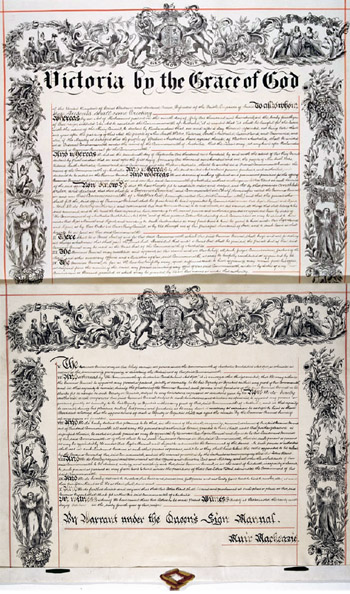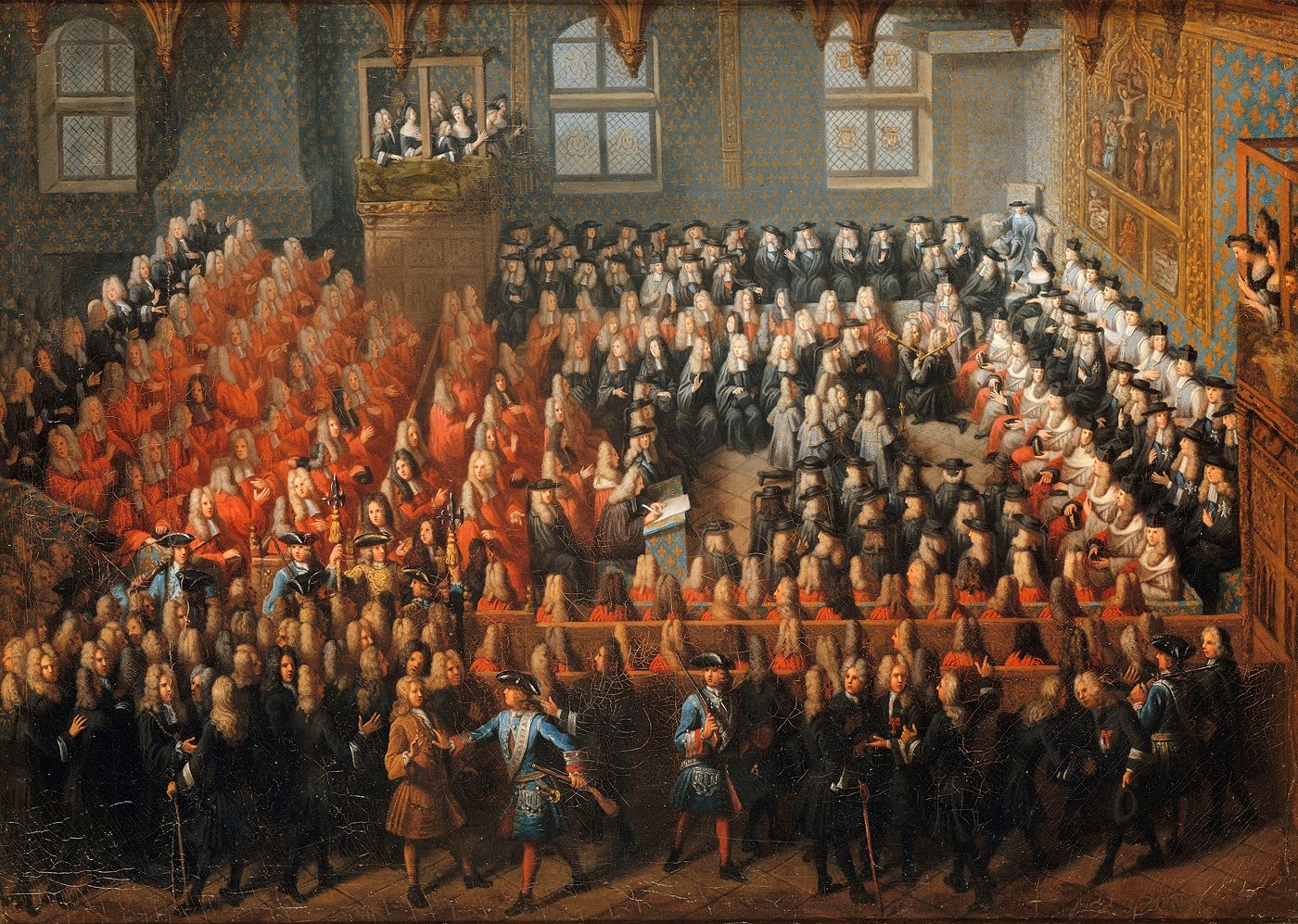|
Nicolas Félix Vandive
Nicolas-Félix Van Dievoet () called Vandive (), French nobility#Titles, peerage, and orders, écuyer, (c.1710–1792) was a French court official He was court clerk at the ''Grand Conseil'' (1743) and of the ''Conseil du Roi'' (King's Council), lawyer at the ''Parlement, Parlement of Paris'' (Parliament of Paris) (cited in 1761) and ''conseiller notaire et secrétaire Maison et Couronne de France près la Cour du Parlement'' (counsellor, notary and secretary at the French Court for the Court of the Parliament). Biography Origins He was a member of the Vandive family, a parisian family of goldsmiths, a branch of the Van Dievoet family of Brussels. His father was the goldsmith Balthazar Philippe Vandive, who was Consul, consul of Paris in 1739. His grandfather was Philippe van Dievoet called Vandive (1654-1738), goldsmith of the King, counsellor of the King, ''officier de la Garde Robe du Roi'' (officer of the King's wardrobe), consul of Paris, trustee of the Hôtel de vill ... [...More Info...] [...Related Items...] OR: [Wikipedia] [Google] [Baidu] |
French Nobility
The French nobility () was an Aristocracy, aristocratic social class in France from the France in the Middle Ages, Middle Ages until its abolition on 23 June 1790 during the French Revolution. From 1808 to 1815 during the First French Empire, First Empire the Emperor Napoleon, Napoléon bestowed titles that were recognized as a new nobility by the Charter of 1814, Charter of 4 June 1814 granted by List of French monarchs, King Louis XVIII of France. From 1814 to 1848 (Bourbon Restoration in France and July Monarchy) and from 1852 to 1870 (Second French Empire) the French nobility was restored as a hereditary distinction without any privileges and new hereditary titles were granted. Since the beginning of the French Third Republic on 4 September 1870 the French nobility has no legal existence and status. However, the former authentic titles transmitted regularly can be recognized as part of the name after a request to the Department of Justice. Families of the French nobility c ... [...More Info...] [...Related Items...] OR: [Wikipedia] [Google] [Baidu] |
Guillaume Vandive
Guillaume Vandive (, also Vandivout and Van Dievoet; ) (22 november 1680 – 1706) was a French printer and bookseller. He was a master tradesman under the patronage of the Dauphin of France. Vandive's premises was on the rue Saint-Jacques, Paris. His trade mark was the "Crowned Dolphin". Vandive published books in French and Latin on the topics of Jansenist theology, trade and travel. After his death at age 26, Vandive's business was continued by Nicolas Simart who married Vandive's widow. Family discord and legal actions ensued.le procureur Baron, ''Mémoire pour Nicolas Simart, marchand libraire à Paris, et damoiselle Éléonore Prieur, son épouse, tuteurs conjointement de damoiselle Charlotte-Eléonore Vandive, fille mineure de ladite damoiselle Prieur, et de deffunt Guillaume Vandive, aussi marchand libraire, intimez et appellans, contre Philippes Vandive, marchand orphèvre à Paris, appelant, et encore contre Balthazard-Philippes Vandive, intervenant et intimé'', Pari ... [...More Info...] [...Related Items...] OR: [Wikipedia] [Google] [Baidu] |
Letters Patent
Letters patent (plurale tantum, plural form for singular and plural) are a type of legal instrument in the form of a published written order issued by a monarch, President (government title), president or other head of state, generally granting an office, right, government-granted monopoly, monopoly, title or status to a person or corporation. Letters patent can be used for the creation of corporations, government offices, to grant city status or heraldry, coats of arms. Letters patent are issued for the appointment of representatives of the Crown, such as governors and governor-general, governors-general of Commonwealth realms, as well as appointing a Royal Commission. In the United Kingdom, they are also issued for the creation of peers of the realm. A particular form of letters patent has evolved into the modern intellectual property patent (referred to as a utility patent or design patent in United States patent law) granting exclusive rights in an invention or design. In ... [...More Info...] [...Related Items...] OR: [Wikipedia] [Google] [Baidu] |
Duc D'Aumont
The House of Aumont is an ancient French noble house which takes its name from Aumont, a small commune in the department of the Somme. The dukedom of Aumont in the peerage of France was created in 1665 for Antoine d'Aumont de Rochebaron (1601–1669), Marquis of Isles. For over two centuries, the Dukes of Aumont held the position of ''First Gentleman of the Bedchamber'' to the king (''Premier gentilhomme de la chambre du Roi''). The d'Aumont family became extinct in 1888 with Louis Marie Joseph d'Aumont, last duke of Aumont, who died single and without children. History The d'Aumont family has a proven lineage dating back to Jean, ''sire d'Aumont'', living in 1248. Already powerful by the 14th century, during the Hundred Years' War the Aumonts served as military commanders to the French kings. Towards the end of that century, the family changed sides to the Dukes of Burgundy, but transferred its loyalties back to the Kings of France after the death of Charles the Bold in ... [...More Info...] [...Related Items...] OR: [Wikipedia] [Google] [Baidu] |
Palace Of Versailles
The Palace of Versailles ( ; ) is a former royal residence commissioned by King Louis XIV located in Versailles, Yvelines, Versailles, about west of Paris, in the Yvelines, Yvelines Department of Île-de-France, Île-de-France region in France. The palace is owned by the government of France and since 1995 has been managed, under the direction of the Ministry of Culture (France), French Ministry of Culture, by the Public Establishment of the Palace, Museum and National Estate of Versailles. About 15,000,000 people visit the palace, park, or gardens of Versailles every year, making it one of the most popular tourist attractions in the world. Louis XIII built a hunting lodge at Versailles in 1623. His successor, Louis XIV, expanded the château into a palace that went through several expansions in phases from 1661 to 1715. It was a favourite residence for both kings, and in 1682, Louis XIV moved the seat of his court and government to Versailles, making the palace the ''de fact ... [...More Info...] [...Related Items...] OR: [Wikipedia] [Google] [Baidu] |
Jean Cruppi
Jean Cruppi (22 May 1855 – 16 October 1933) was a French politician of the Third Republic where he held several ministerial posts. He started as a lawyer before becoming a magistrate. He was also a writer and journalist before his career in government. His first major posting was Minister of Commerce and Industry in 1908. He was appointed Minister of Foreign Affairs in the Ernest Monis government, which lasted less than four months from 2 March – 27 June 1911. Cruppi was responsible for sending soldiers into Fez, eventually leading to France's control over Morocco. In the aftermath, Cruppi held talks with the British in London at the start of the Agadir Crisis, which was caused by France's invasion of Morocco. He was married to author and activist Louise Cruppi Louise Cruppi, née Crémieux (1862–1925), was a French writer, musician and activist. Biography Louise Cruppi was raised from the age of 10 years old by her grandfather, Isaac Adolphe Crémieux (1796–18 ... [...More Info...] [...Related Items...] OR: [Wikipedia] [Google] [Baidu] |
Parlement Of Paris
The ''Parlement'' of Paris () was the oldest ''parlement'' in the Kingdom of France, formed in the 14th century. Parlements were judicial, rather than legislative, bodies and were composed of magistrates. Though not representative bodies in the present sense of the word, they had procedures and authorities that could delay the otherwise unchecked power of the King. Because of its location and history, the Parlement of Paris was the most significant. The Parlement of Paris was established under Philip IV of France in 1302. The Parlement of Paris would hold sessions inside the medieval royal palace on the Île de la Cité, which today is the site of the Paris Hall of Justice. History In 1589, Paris was effectively in the hands of the Catholic League. To escape, Henry IV of France summoned the parlement of Paris to meet at Tours, but only a small faction of its parliamentarians accepted the summons. (Henry also held a parliament at Châlons, a town remaining faithful to the king ... [...More Info...] [...Related Items...] OR: [Wikipedia] [Google] [Baidu] |
Louis XV
Louis XV (15 February 1710 – 10 May 1774), known as Louis the Beloved (), was King of France from 1 September 1715 until his death in 1774. He succeeded his great-grandfather Louis XIV at the age of five. Until he reached maturity (then defined as his 13th birthday) in 1723, the kingdom was ruled by his grand-uncle Philippe II, Duke of Orléans, as Régence, Regent of France. André-Hercule de Fleury, Cardinal Fleury was chief minister from 1726 until his death in 1743, at which time the king took sole control of the kingdom. His reign of almost 59 years (from 1715 to 1774) was the second longest in the history of France, exceeded only by his predecessor, Louis XIV, who had ruled for 72 years (from 1643 to 1715). In 1748, Louis returned the Austrian Netherlands, won at the Battle of Fontenoy of 1745. He ceded New France in North America to Great Britain and Spain at the conclusion of the disastrous Seven Years' War in 1763. He incorporated the territories of the Duchy of Lorr ... [...More Info...] [...Related Items...] OR: [Wikipedia] [Google] [Baidu] |



